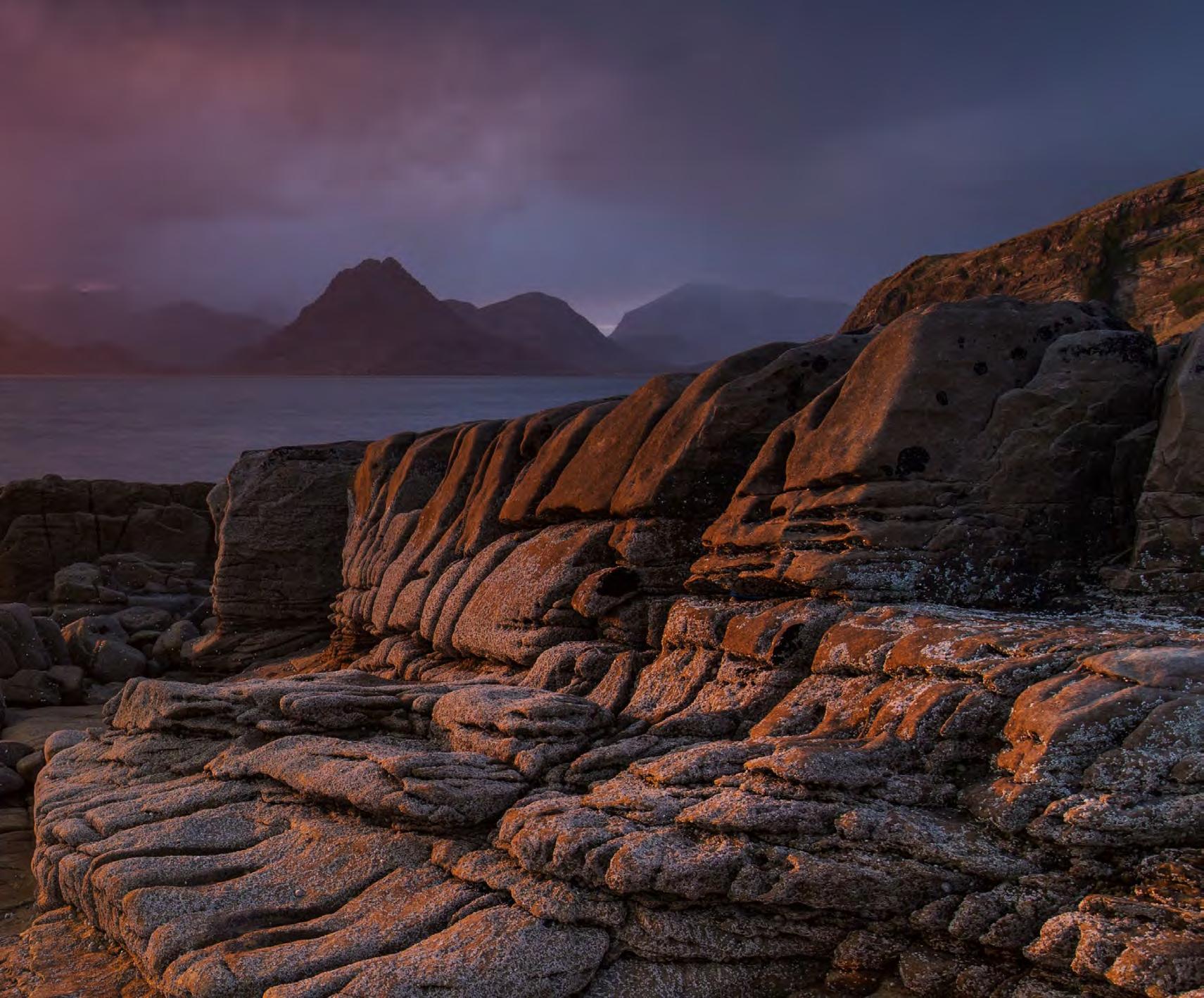Scotland’s wild frontier coast lands
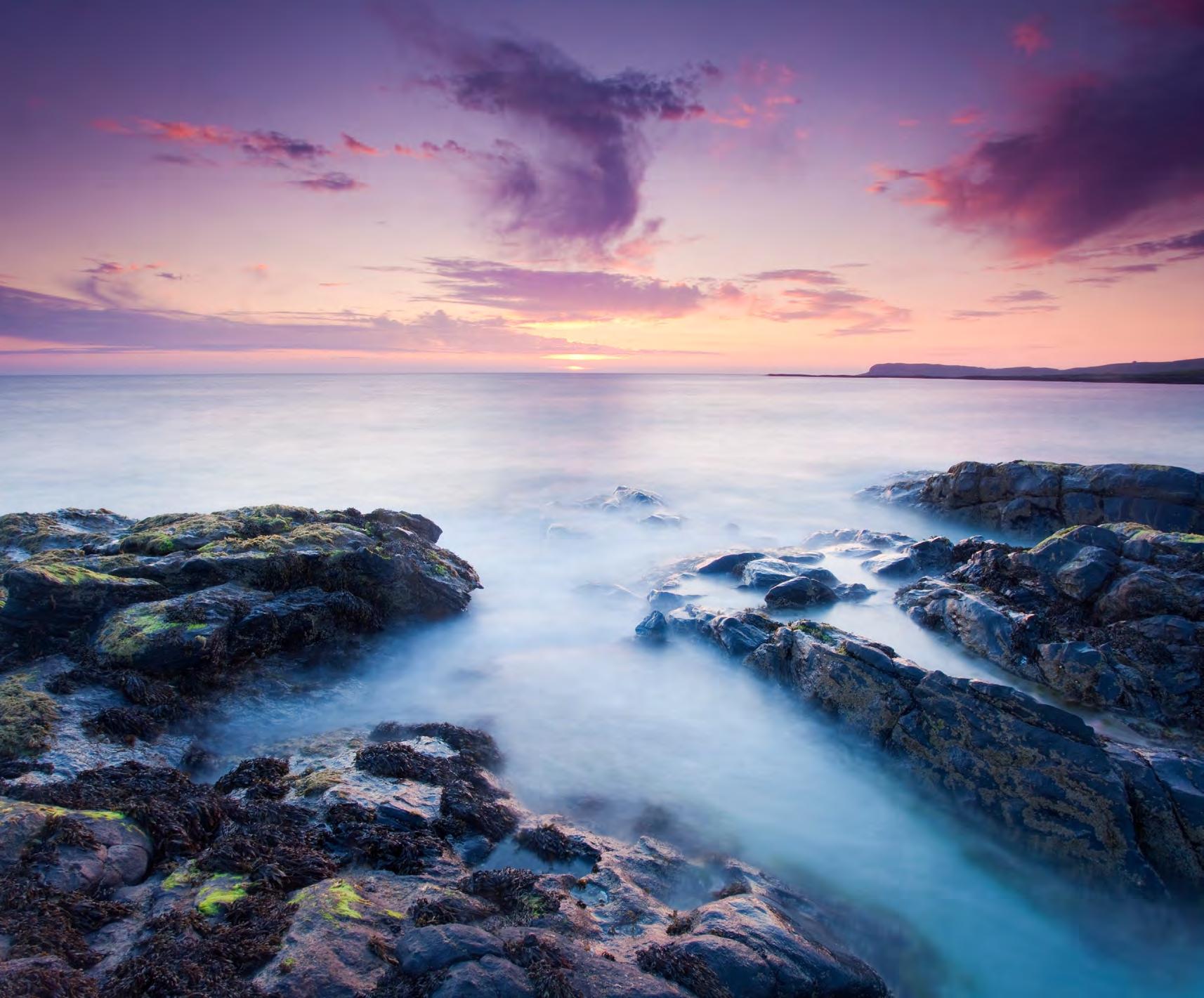

More than 70% of the Earth’s surface is covered by water and yet, for many of us, the marine world exists largely unseen and out of mind. Historically, we had a much closer connection with the sea. Human communities were once concentrated around the coast, where the sea lanes supported trade and the rich inshore waters teemed with marine life, providing food and livelihoods for centuries.
Today, these same coastal waters support a fraction of the life they once did but we continue to be reliant on the resources and life-supporting services the ocean provides. The world’s oceans help regulate the global climate and lock away vast quantities of carbon, while oceanic bacteria and plankton are responsible for half of all the photosynthesis that occurs across our – mostly blue – planet.
However, the world’s oceans, so vast and seemingly limitless, have rarely been responsibly treated and their enormous wealth has been plundered, polluted and spoiled. Relentless human exploitation and extraction of what once must have seemed like an endless resource has depleted and degraded our seas, robbing them of their riches and changing them beyond recognition.
Gone are many of the great whales, hunted for their meat and oil. Gone are the once-prolific fish stocks that fed nations. Trashed are the reefs and seagrass meadows that sheltered a mind-boggling array of life. Our seas have been stripped bare, trawled to destruction and now, as climate change bites, have become increasingly starved of oxygen and hostile to life, leaving it hard to imagine the richness of lifeforms they once supported.
Scotland’s coasts used to regularly see blue, humpback, fin, sperm, bottlenose and sei whales. Vast oyster beds once filtered and purified the waters of our east-coast firths, and bountiful shoals of cod, herring and whiting provided coastal communities with a sustainable living, but all this abundance is now hugely diminished through hunting and overfishing on an industrial scale. Over recent decades, as fish stocks have declined, we have dredged our seabed indiscriminately for ever-slimmer returns, leaving a barren wasteland, raked bare of life.
Shockingly, this destruction and unsustainable exploitation has been actively encouraged by successive governments over the past 50 years. Short-term economic decisions have seen the once-productive waters of the west coast reduced to supporting little more than a few shellfish and
salmon farms. And yet, despite this bleak picture, Scotland’s seas could still recover, perhaps more quickly and more completely than our degraded terrestrial habitats. Scottish coastal waters remain linked to the rest of the world’s oceans, providing a route by which our impoverished seas could be restocked and rewilded. Given the opportunity – and the protections needed – the potential still exists for marine life to recolonise our shores, for fish stocks to recover and inshore fisheries to thrive – if we allow them to do so.
On paper our seas appear well protected, with 233 Marine Protected Areas (MPAs) established around our coasts. These MPAs were set aside for longterm conservation and cover 37% of our seas, but in reality they are protecting very little. This is because the Scottish government has repeatedly missed deadlines to implement fishing restrictions and management plans within the MPAs.
The government’s own data backs up the urgent need for restrictions on the most damaging forms of fishing, yet these continue in all but a handful of MPAs and, consequently, our marine ecosystems
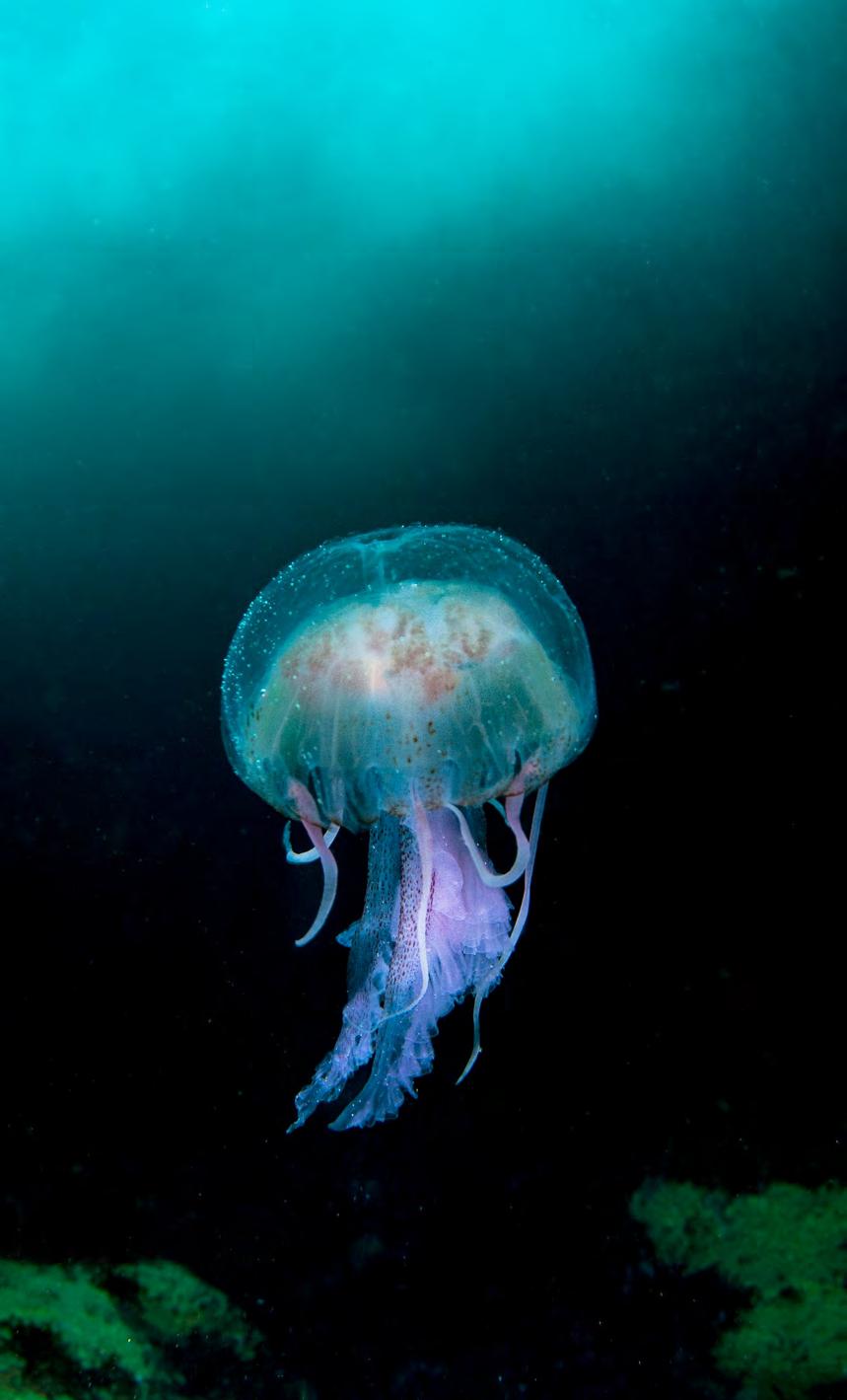
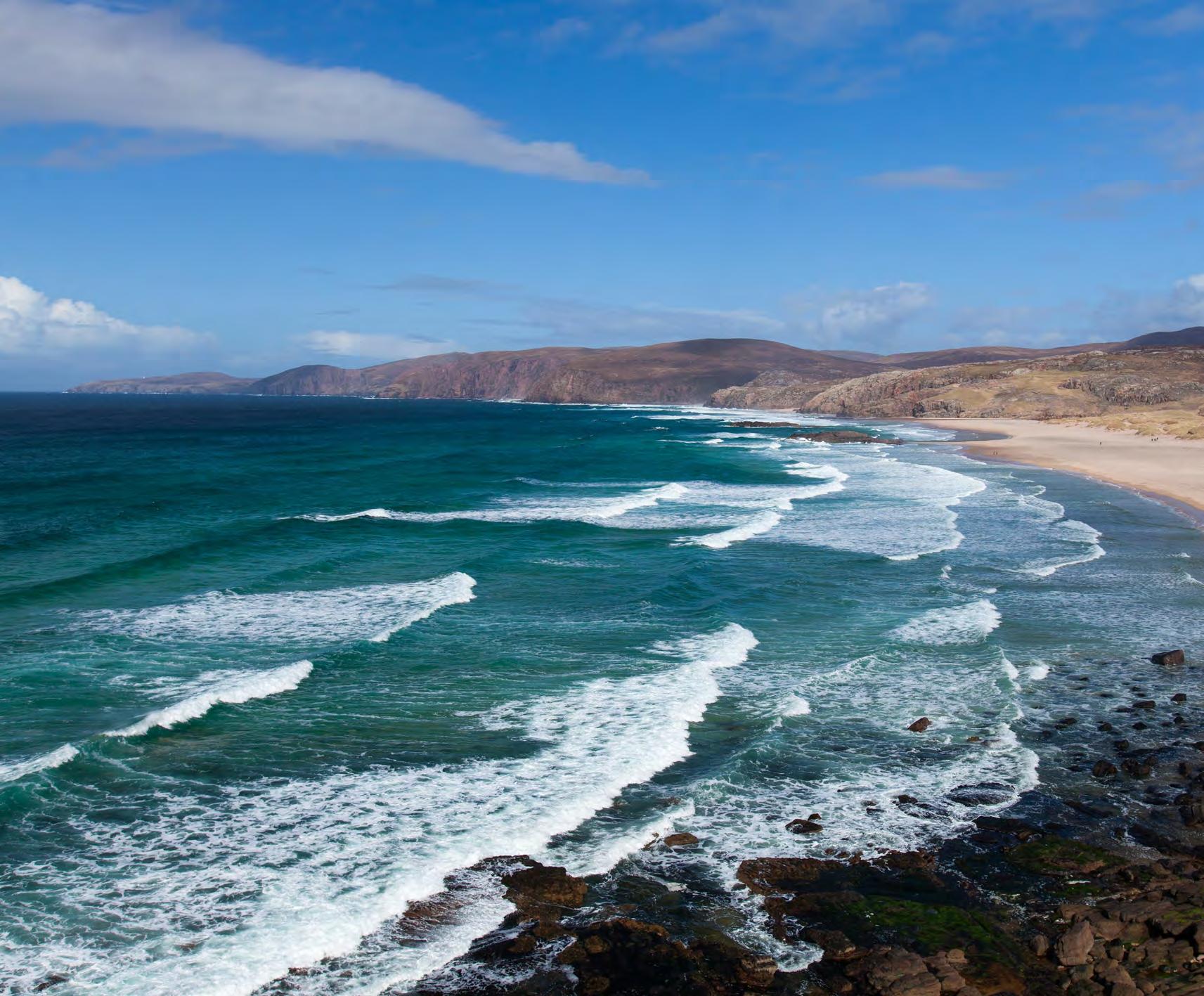

Scotland’s seas extend over 462,000 km2, an area approximately six times its land area, with huge potential for rewilding at a scale that could inspire Scotland as a Rewilding Nation.
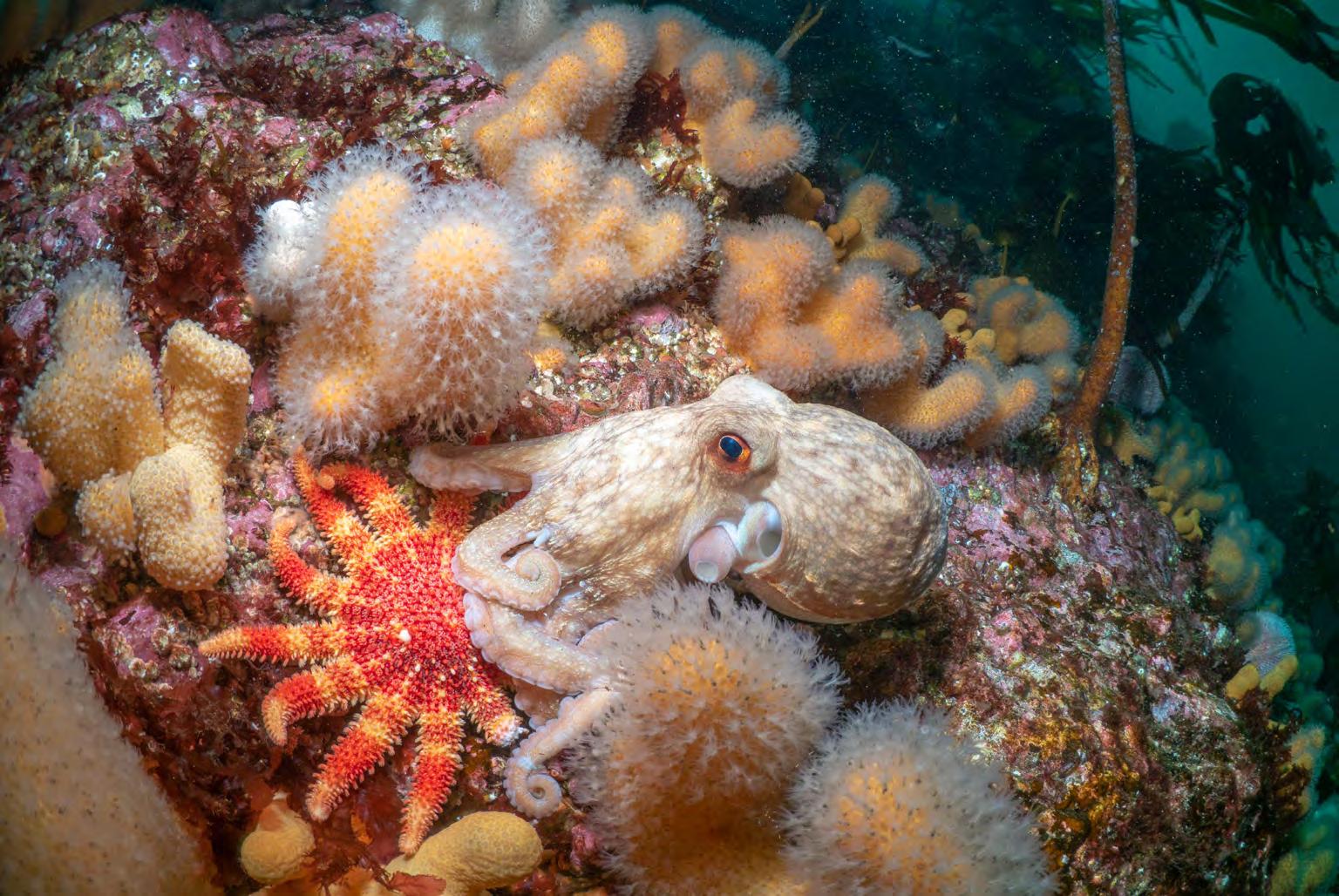
Scotland’s cold-water reefs support some of Europe’s most diverse communities of marine life. Here, off the coast of Sutherland, a curled octopus rests next to a common sunstar and the soft coral known as dead man’s fingers.
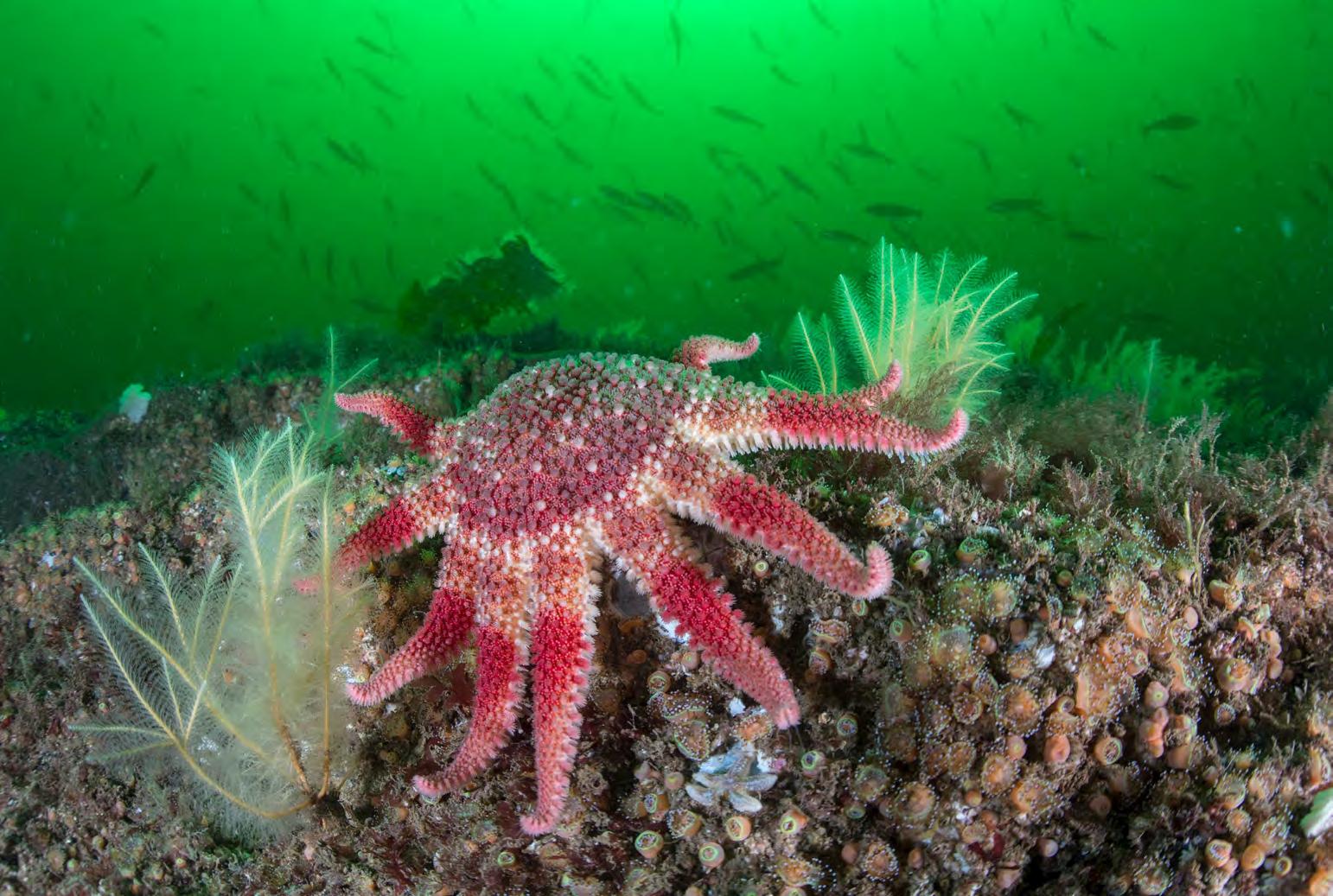 Established in 2008, the No Take Zone in Lamlash Bay on the island of Arran is home to precious maerl beds, seagrass meadows and kelp forests.
Established in 2008, the No Take Zone in Lamlash Bay on the island of Arran is home to precious maerl beds, seagrass meadows and kelp forests.

Machair, a Gaelic word describing a fertile, low-lying, grassy plain, refers to a unique habitat that only occurs on the exposed west-facing shores of Scotland and Ireland. Machair is formed from lime-rich shell sand washed up over thousands of years and supports wildflowers such as red clover, bird’s-foot trefoil, yarrow and daisies, as well as many species of breeding waders.
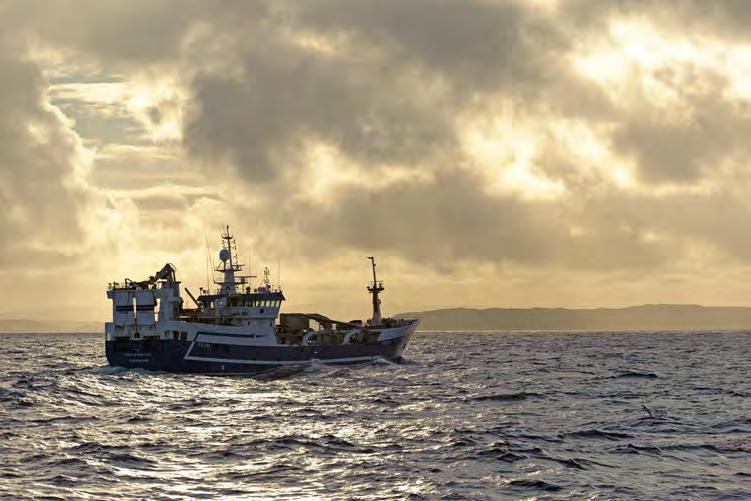
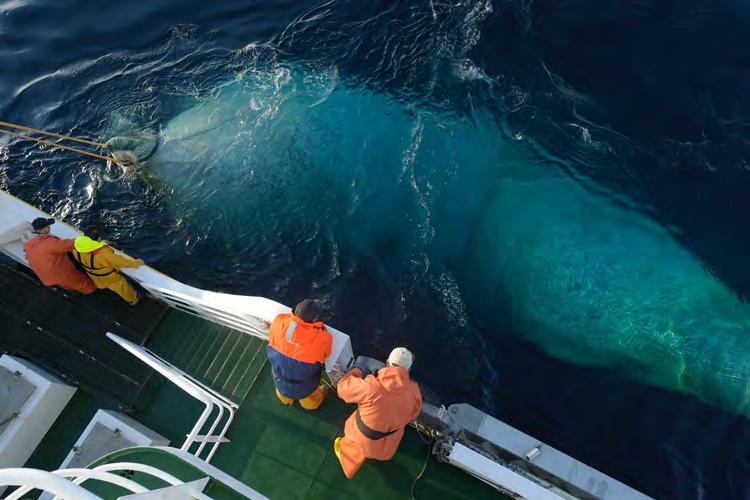
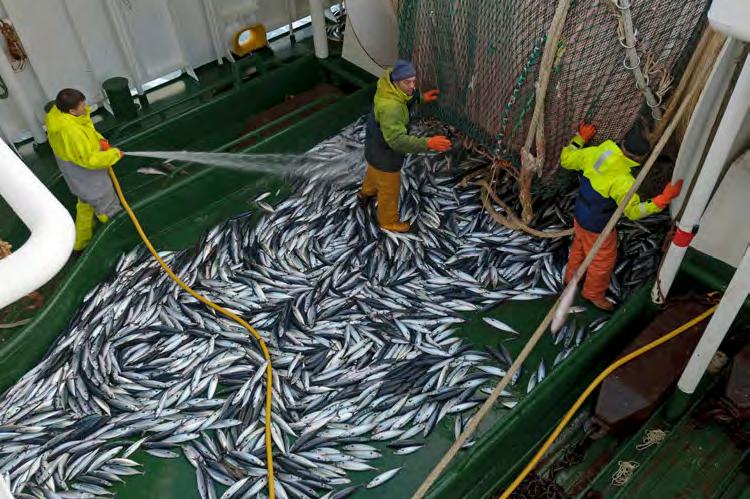
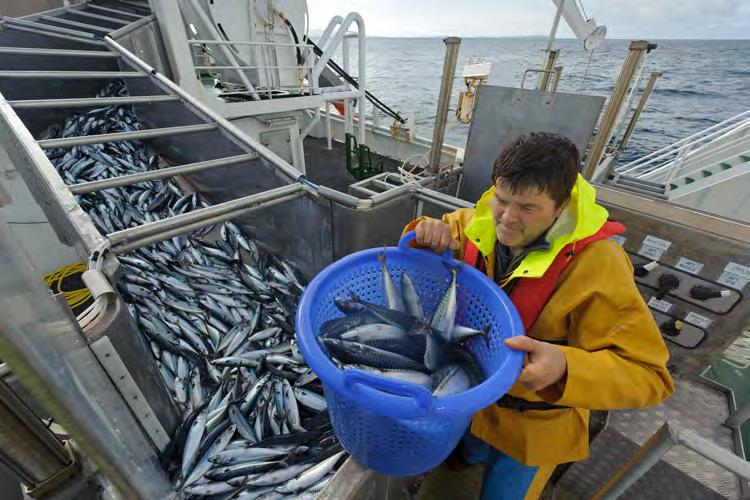
Over the centuries, fishing has shifted from fleets of small boats operating sustainably to small numbers of modern-day super-trawlers. Just 19 of these behemoths now scoop up 65% of Scotland’s landed fish, forcing many smaller inshore operators out of business.
